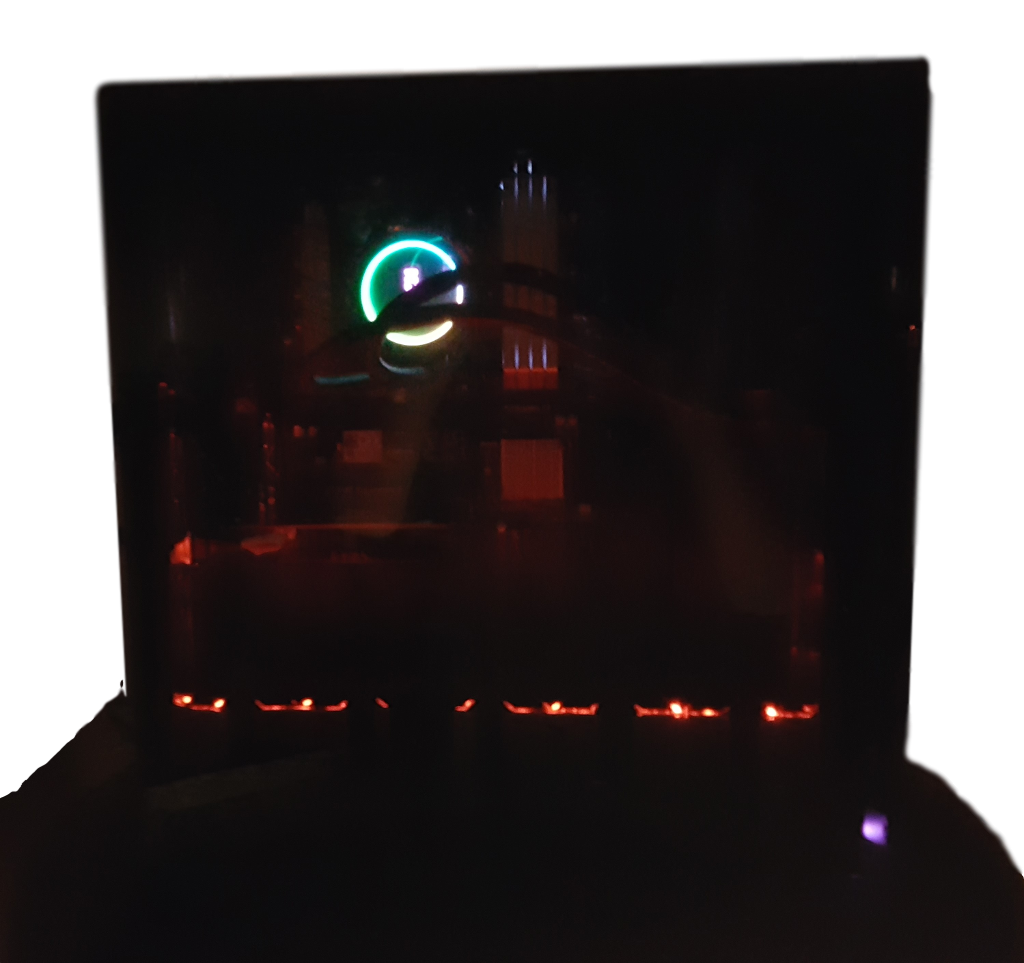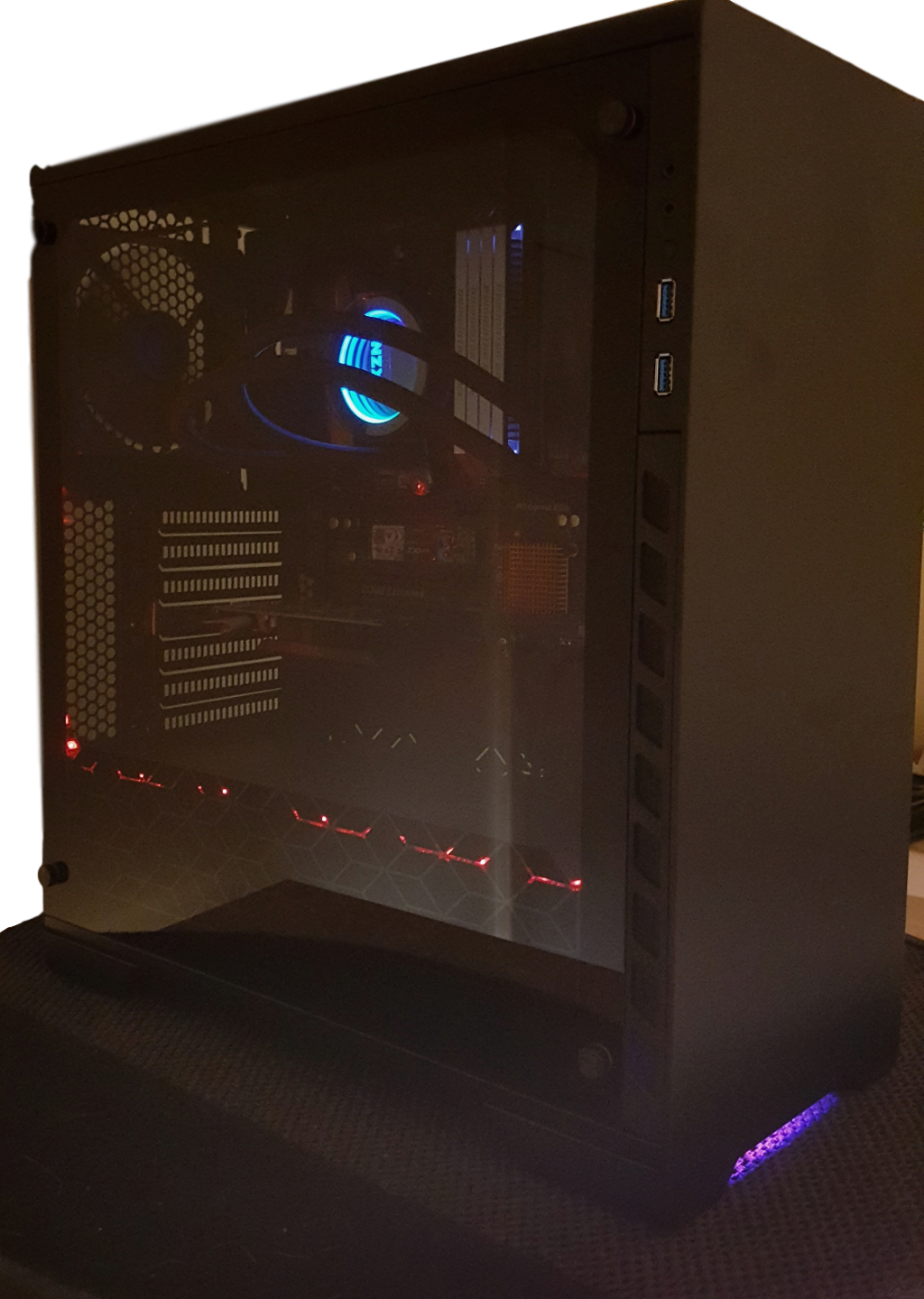PERFORMANCE
One of our primary concerns in any new build is adequate cooling, especially for our CPU. We have downloaded Intel’s own Processor Diagnostic Tool, which among other tests conducts a stress test on the CPU, monitoring temperatures throughout. As you can see from the next screenshot, our CPU easily passed all tests, with CPU temps ranging from a low of 36°C (97°F) to a high of 45°C (113°F). Average temp was 38°C (100°F), some 67°C below maximum allowed temperature.
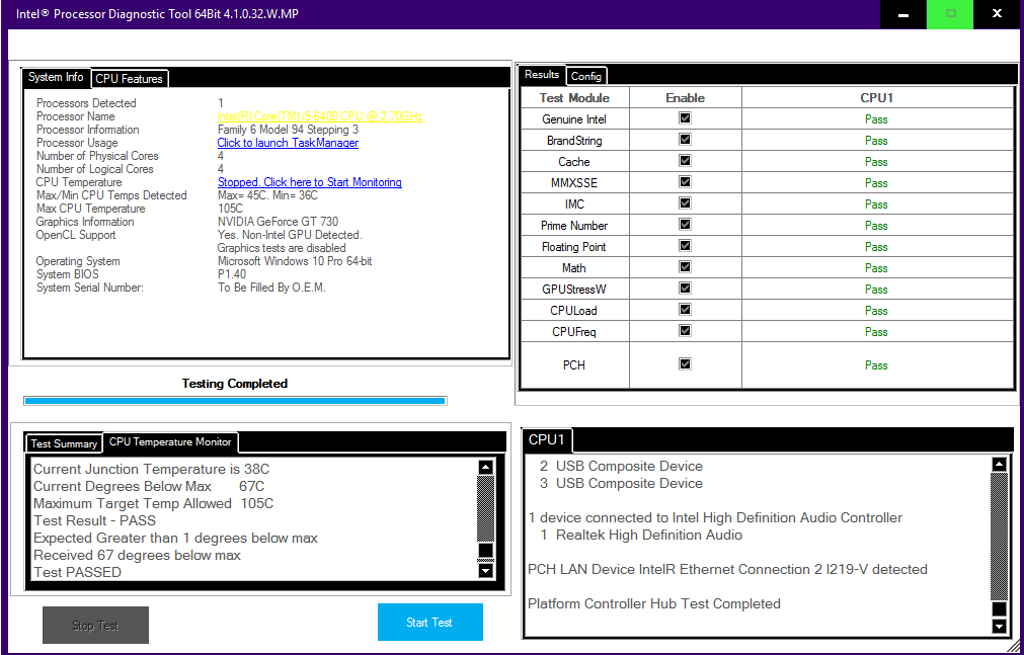 Drilling a little deeper using the CoreTemp freeware, we can see the temperatures of the individual cores. In the screenshot(s) below, the left half shows core temps at idle, with the right half showing core temps under 100% load. Core temps at idle were 31-32°C (88-89°F), and 44-46°C (113-114°F) under full load. Our Kraken CPU cooling solution appears to be working quite well.
Drilling a little deeper using the CoreTemp freeware, we can see the temperatures of the individual cores. In the screenshot(s) below, the left half shows core temps at idle, with the right half showing core temps under 100% load. Core temps at idle were 31-32°C (88-89°F), and 44-46°C (113-114°F) under full load. Our Kraken CPU cooling solution appears to be working quite well.
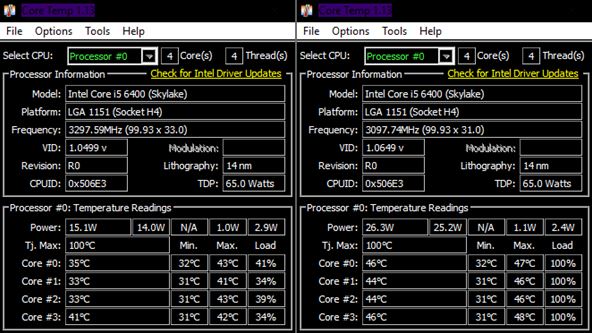 Our other cooling-related concern is “hotspots” within the chassis. This in and of itself is not necessarily an issue, depending on how hot the “hotspot” is, and whether or not there are any components in that immediate area that need better cooling (usually airflow-related). Utilizing our handy-dandy Crafstman infrared heat-sensing gun, we will scan the components from the left side of the chassis at a distance of about 6″ away to obtain ambient temperatures in their immediate area. The temperature readings were as follows:
Our other cooling-related concern is “hotspots” within the chassis. This in and of itself is not necessarily an issue, depending on how hot the “hotspot” is, and whether or not there are any components in that immediate area that need better cooling (usually airflow-related). Utilizing our handy-dandy Crafstman infrared heat-sensing gun, we will scan the components from the left side of the chassis at a distance of about 6″ away to obtain ambient temperatures in their immediate area. The temperature readings were as follows:
- Voltage regulator heatsink 90°F
- Kraken pump 79°F
- Memory 79°F
- OCZ RD400 SSD 116°F
- Graphics card 82°F
- Z170 Chipset heatsink 98°F
- Kraken radiator 77°F
All of the above readings are well within safe operating ranges, even the OCZ RD400 SSD. M.2 SSDs tend to run warm, but even the 116°F reading we obtained is well below any potentially troublesome temperatures that could induce throttling. The NEO MidTower chassis cools quite efficiently with the hardware we have installed.
REPORT ANALYSIS AND FINAL THOUGHTS
We have reviewed Phanteks PC cases in the past, and always felt they delivered pretty solid “bang for the buck”. The last Phanteks case we reviewed was the Enthoo Pro M, and we particularly liked the slide-out upper fan mounting module. We were anxious to see what their Metallic Gear nameplate would have to offer in the NEO. Phanteks “gets it” when it comes to cable management clearance, and this passes down to the Metallic Gear NEO as well.
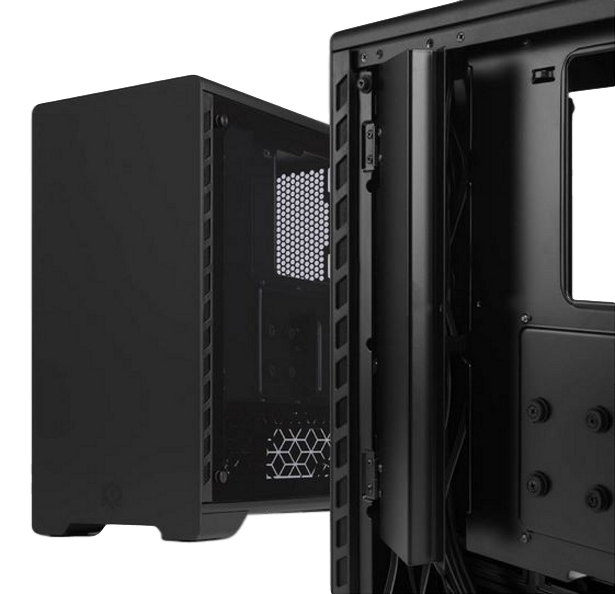 Metallic Gear’s NEO MidTower did not disappoint. The finished build is sleek and polished looking, without being the least bit overstated, with clean lines and smooth finishes that all fit precisely and blend nearly seamlessly into a quite minimalist appearance. We like the dual tempered glass panels (did I mention that they are even interchangeable?) and the sand-blasted aluminum outer panels connected to a steel chassis. There is nothing cheap about the quality and appearance of the NEO midtower chassis. It is also nice to see RGB support in a case at this price point. As of publication of this review, the black version of the NEO MidTower is selling on Amazon for $99.99, with the silver version at $109.99 — excellent value indeed.
Metallic Gear’s NEO MidTower did not disappoint. The finished build is sleek and polished looking, without being the least bit overstated, with clean lines and smooth finishes that all fit precisely and blend nearly seamlessly into a quite minimalist appearance. We like the dual tempered glass panels (did I mention that they are even interchangeable?) and the sand-blasted aluminum outer panels connected to a steel chassis. There is nothing cheap about the quality and appearance of the NEO midtower chassis. It is also nice to see RGB support in a case at this price point. As of publication of this review, the black version of the NEO MidTower is selling on Amazon for $99.99, with the silver version at $109.99 — excellent value indeed.
We only found four negative aspects of the NEO MidTower chassis, two of which are very minor and easily remedied, and two of which would require a bit of re-engineering. On the simple-to-remedy side, Metallic Gear needs to drill and tap one more hole for a motherboard standoff at the bottom right of an mATX motherboard, as well as providing enough standoffs for all the holes. If we are advertising the NEO as compatible with minITX, microATX and full ATX motherboards, let’s not forget to include enough standoffs and holes to screw them into to make this a reality. Also, use of a 140mm radiator in either of the front fan positions renders the other position unusable, unless a little creativity is used to mount an intake fan in the other position. An extra template or two’s worth of fan mounting holes could be drilled in the front fan/radiator mounting panel to make that area more fully usable. Overall, radiator options are a tad limited in the NEO, but if you are building a system that requires something more extreme in liquid cooling, you would likely be looking at something larger than the NEO MidTower anyway.
My biggest bone of contention with the NEO MidTower was the location and routing of the front panel connections and cabling. In its present form, the cabling (which is a fairly bulky bundle) spans right across the upper fan area and cannot help but compromise the airflow to some extent. A re-design of the front would ideally see the front I/O ports relocated from the upper left side to the center left side, allowing the cabling to span between the front fans and compromising the airflow of neither. This might also require relocating one or two of the front cover latching points.
All in all, the Metallic Gear NEO MidTower chassis was enjoyable to build a system into. Features such as dual tempered glass side panels, a cable management concealment “door”, and RGB lighting support make its price point of around $100.00 US an excellent value. For gamers looking to build a new system, the Metallic Gear NEO MidTower chassis can house quite a variety of premium components and look good doing so. We are proud to award the Metallic Gear NEO MidTower chassis our Gold Seal. Well done, Metallic Gear / Phanteks!
Check out the Metallic Gear Neo Black MidTower case on Amazon!
Clean gaming build!
Appearance, performance and usability - 92%
92%
Great bang for the buck!
An excellent option for a non-outlandish gaming build
 Technology X Tomorrow's Technology Today!
Technology X Tomorrow's Technology Today! 
